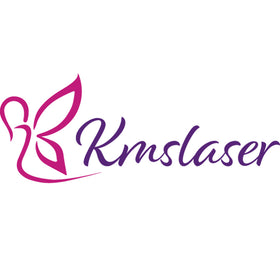The Science Behind Shockwave Therapy
What Is Shockwave Therapy and How It Was Developed
Shockwave therapy, originally developed for medical use in breaking up kidney stones (lithotripsy), has evolved into a powerful non-invasive solution for musculoskeletal, aesthetic, and rehabilitative treatments. The therapy involves the application of focused or radial acoustic waves that penetrate deep into soft tissues and bones without damaging the skin. In aesthetic and pain management fields, shockwave therapy is now used to stimulate collagen production, reduce chronic inflammation, break up fibrotic tissue, and support natural healing—without surgery or downtime.
| Field | Initial Application | Modern Use of Shockwave |
|---|---|---|
| Urology | Kidney stone fragmentation | Still used for lithotripsy |
| Orthopedics | Bone stimulation and tendon repair | Treating plantar fasciitis, calcific tendinitis |
| Aesthetics | Off-label cellulite smoothing | Now used in fat reduction & skin firming |
The Biological Effects of Shockwave Energy
When acoustic waves penetrate tissue, they generate rapid pressure changes at a cellular level. This triggers microtrauma—a controlled stress response that stimulates the body to initiate repair mechanisms. The energy also improves microcirculation, breaks down calcified tissue, and promotes the release of growth factors and nitric oxide. In aesthetic applications, these mechanisms help smooth fibrotic fat tissue and boost skin elasticity. In sports medicine, they help resolve chronic injuries by regenerating blood vessels and reducing inflammation.
| Shockwave Effect | Cellular Response | Result in Tissue |
|---|---|---|
| Microtrauma induction | Activates healing cascades | Tissue regeneration and strengthening |
| Neovascularization | Stimulates new blood vessel formation | Improved nutrient and oxygen delivery |
| Collagen remodeling | Increases fibroblast activity | Tighter, firmer skin appearance |
Conditions and Aesthetic Concerns Treated with Shockwave Therapy
Modern shockwave systems treat a wide range of therapeutic and cosmetic concerns. In rehab and sports clinics, shockwave is used to treat tendinopathies, muscle injuries, joint pain, and trigger points. In medispas and body contouring studios, it’s applied to reduce cellulite, tighten skin, and promote lymphatic drainage. High-frequency radial systems, like our CE-certified model, allow adjustment of intensity, frequency, and pulses per session—enabling both clinical and cosmetic flexibility.
| Condition / Concern | Shockwave Use | Result Observed |
|---|---|---|
| Plantar fasciitis | Focused shockwave to heel pad | Pain reduction, improved mobility |
| Cellulite on thighs | Radial wave stimulation | Smoother skin after 6–8 sessions |
| Chronic tendinitis | High-energy focused therapy | Accelerated healing and pain relief |
Frequently Asked Questions (FAQ)
Q: Is shockwave therapy painful?
A: Some clients feel a tapping or deep pressure, but it is generally well tolerated. Settings can be adjusted based on sensitivity.
Q: How many sessions are needed for results?
A: Most protocols recommend 4–8 sessions depending on the condition being treated.
Q: Are the effects of shockwave therapy permanent?
A: Pain relief and tissue remodeling results are long-lasting, though maintenance may be needed for aesthetic applications.
Q: Can shockwave be combined with other treatments?
A: Yes. It pairs well with EMS, RF, lymphatic drainage, or LED therapy.
Q: Where can I buy a certified, multifunctional device?
A: Visit our CE-approved model here: shockwave therapy system with ultrasound integration.
Conclusion: A Modern Approach to Regeneration and Relief
From pain management to body sculpting, shockwave therapy offers a non-invasive, clinically backed, and highly effective way to trigger cellular repair and enhance tissue performance. With proper training and a reliable device, clinics can deliver real results with zero downtime.
📞 Want to add shockwave technology to your spa or rehab studio?
Email us at sophia@kmslaser.com or WhatsApp us: +86 18676839070





